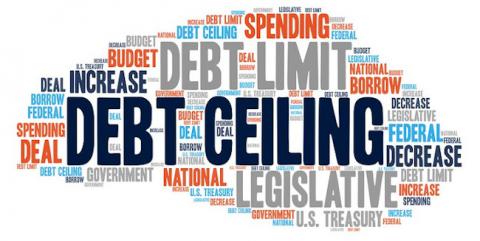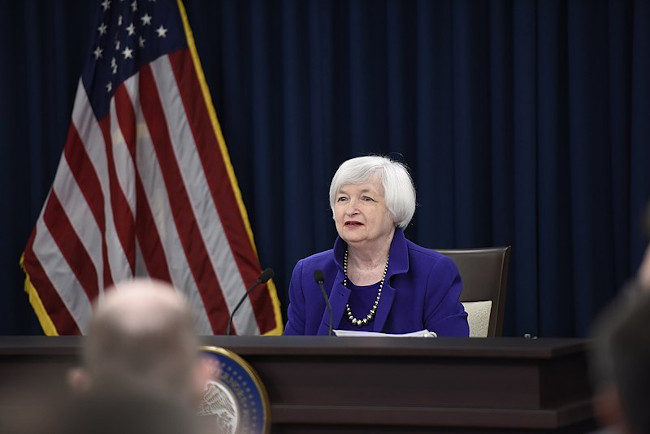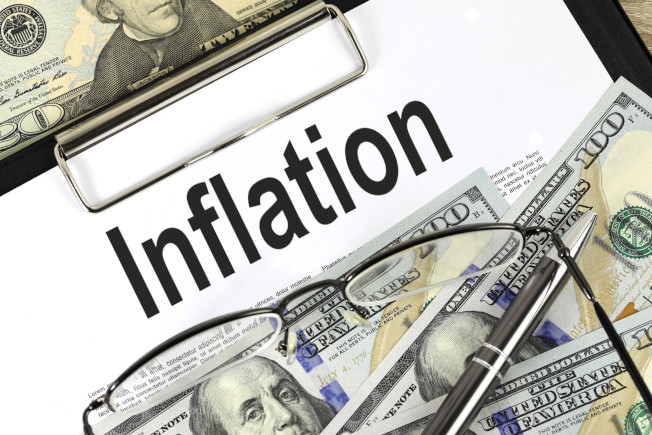The Debt Ceiling, Monetary Policy, and Inflation

As the U.S. default deadline looms, Treasury Secretary Janet Yellen said that failing to raise the debt ceiling would be an economic catastrophe. The U.S. debt ceiling is a legal cap, set by Congress, limiting the amount that the Treasury can borrow. The reason that the debt ceiling must be raised is because the government has already outspent its available funds and needs to borrow more. Secretary Yellen and other supporters of raising the debt ceiling fear that the U.S. will not be able to meet its upcoming obligations and will, for the first time in history, default on its debts. Those opposing the raising of the debt ceiling believe that if the government would reduce waste, it would be able to function within the existing limits. Further, they point out that raising the debt ceiling perpetuates a trend of government deficit spending, adding to the national debt, which already stands at $31.38 trillion.
When the Founding Fathers designed the U.S. government, it was determined that the three branches, executive, legislative, and judicial would all be independent of one another, but with checks and balances to prevent any of the three from seizing control. While the president makes a budget, through the Office of Management and Budget, the actual spending must be approved by Congress, through the Congressional Budget Office. Because Congress is the only branch that is directly elected by the citizenry, the Founding Fathers believed that Congress should have control over how citizens’ tax dollars were spent.

The last time the government had a budget surplus was in 2001. That means that each year, since then, the government has spent more than it earned in tax revenue. The reasons for this spending are many and complex. One issue is that politicians are focused on reelection. By spending on social programs or championing spending that impacts people’s lives directly, politicians can “buy” votes. Much of this spending, however, does long-term harm, but a president will only be in office for a maximum of eight years. So, there is a tendency to “kick the can down the road” and let the new administration deal with the mess.
Congressional representatives, on the other hand, have no term limits, a policy that was meant to invoke forward thinking, as congresspersons could potentially still be in office when the misspending of the past came due. In practice, however, the lack of term limits means that they are always thinking about reelection. Consequently, no senator or representative wants to be the one who killed an existing spending program that voters had come to expect. The end result is that both the president and Congress are motivated to spend.
In times of economic downturn, such as the 2008 financial crisis or the pandemic lockdowns, the government enacts expansionary fiscal and monetary policy to “stimulate” the economy and create jobs. These policies also create inflation and many economists argue that the growth is illusory. The pandemic-related spending and stimulus caused inflation to reach 9.1% in June 2022. Total spending on the pandemic was roughly $4.6 trillion. But just counting direct cash payments, the average American received about $3,500. That $3,500 was quickly absorbed by everything from groceries to gasoline going up in price. Meanwhile, $4.6 trillion dollars of newly-created money was spent, ultimately increasing the debt, expanding the money supply, and decreasing the value of the dollar.

To cope with the inflation, the government released the Inflation Reduction Act, which called for $433 billion worth of additional spending, partially supported by an increase in taxes. The idea that the government could spend itself out of crisis, including spending itself out of inflation, dates back to British economist John Maynard Keynes. Keynes rose to prominence during the early part of the 20th Century becoming a primary influence for The New Deal, as well as fiscal and monetary policy of the U.S. and other major economies. He believed that by increasing the money supply, the central authority could restore the country to full employment, and that along with full employment, would come real growth. To achieve these goals, Keynes encouraged increased government expenditure, deficit spending, and lower taxes to stimulate demand.
During her tenure as Fed chairperson, Yellen identified the role of the Fed as focusing on monetary policy, promoting stability, and avoiding a financial crisis “that could choke off credit to consumers and businesses”. In addition, she defined monetary policy as “central bank actions aimed at influencing interest rates…to help foster a healthy economy.” These policies were evident in the aftermath of the 2008 global financial crisis. It was credit expansion and gambling on bad debts that caused the crisis. And yet, the Fed’s reaction was to slash interest rates, encouraging more borrowing and spending. More recently, after the failure of Silicon Valley Bank, the Treasury, along with the Fed and the Federal Deposit Insurance Corporation provided hundreds of billions in low-interest loans to SVB and other banks facing a liquidity crunch.
This credit expansion was taken in spite of the fact that the failure of these banks was caused by credit expansion. Additionally, while the country is already facing high inflation, it would make sense to allow credit to dry up, and to discourage borrowing and spending. Instead, these bailouts will not only fuel the fire of the current inflation, but also cause future inflation and debt, while rewarding reckless banking policies. This will result in future bailouts, future stimulus, and continued inflation and debt.
The cutting of interest rates as well as the expansion of government spending and debt causes the boom-and-bust cycles that plague the economy. When interest rates are unnaturally low, as they were from 2008 until last year, borrowing and expansion is encouraged, creating inflation. When government spending and debt is high, even in the face of high interest rates, the result is more inflation. After the boom, a bust must come to bring the market back to reality. But the bust would be unpopular. Yellen said deflation leads to economic stagnation, as employers either cut jobs or wages. And so, U.S. policies tend to be inflationary, in order to soften the blow.
Right now, the battle to raise the debt limit is being drawn along party lines. Unfortunately, neither political party can boast greater fiscal and monetary responsibility. Both parties have been guilty of deficit spending and presidents from both parties have asked Congress to raise the debt limit in the past. The economic reality, however, is that frequently raising the debt ceiling defeats the purpose of having a debt ceiling. Instead of forcing the government to work within its budget, the government will continue to increase the national debt, and we will all pay the price in the future.
Author Bio:
Antonio Graceffo, a Highbrow Magazine contributor, is a Ph.D. and also holds a China-MBA from Shanghai Jiaotong University. He works as an economics professor and China economics analyst, writing for various international media. Some of his books include: The Wrestler’s Dissertation, Warrior Odyssey, Beyond the Belt and Road: China’s Global Economic Expansion, and A Short Course on the Chinese Economy.
For Highbrow Magazine
Image Sources:
--EpicTop10 (Flickr, Creative Commons)
--Federal Reserve (Wikimedia, Creative Commons)
--Blue Diamond Gallery (Creative Commons)































































































































































































































































































































